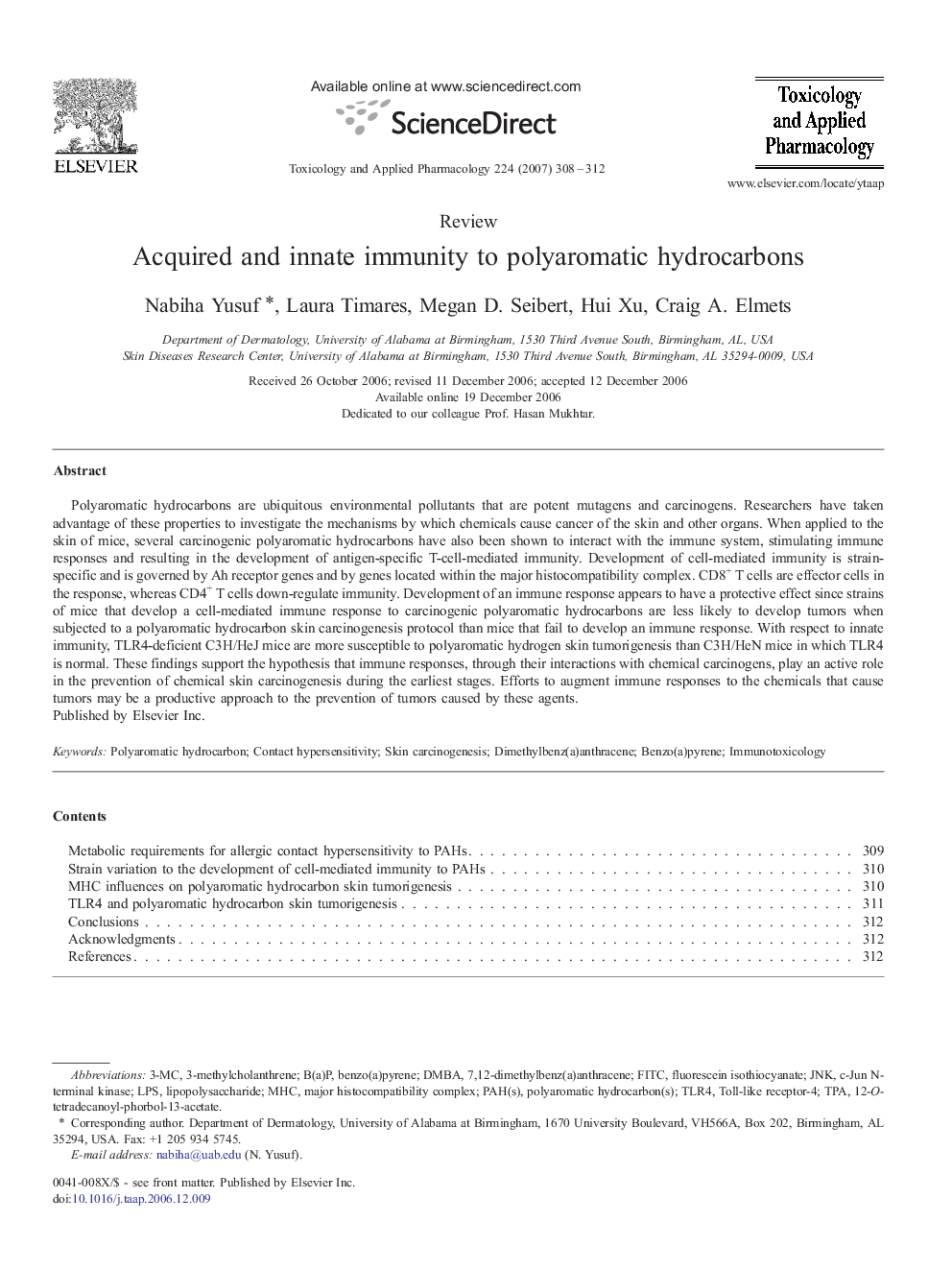| کد مقاله | کد نشریه | سال انتشار | مقاله انگلیسی | نسخه تمام متن |
|---|---|---|---|---|
| 2571674 | 1128645 | 2007 | 5 صفحه PDF | دانلود رایگان |

Polyaromatic hydrocarbons are ubiquitous environmental pollutants that are potent mutagens and carcinogens. Researchers have taken advantage of these properties to investigate the mechanisms by which chemicals cause cancer of the skin and other organs. When applied to the skin of mice, several carcinogenic polyaromatic hydrocarbons have also been shown to interact with the immune system, stimulating immune responses and resulting in the development of antigen-specific T-cell-mediated immunity. Development of cell-mediated immunity is strain-specific and is governed by Ah receptor genes and by genes located within the major histocompatibility complex. CD8+ T cells are effector cells in the response, whereas CD4+ T cells down-regulate immunity. Development of an immune response appears to have a protective effect since strains of mice that develop a cell-mediated immune response to carcinogenic polyaromatic hydrocarbons are less likely to develop tumors when subjected to a polyaromatic hydrocarbon skin carcinogenesis protocol than mice that fail to develop an immune response. With respect to innate immunity, TLR4-deficient C3H/HeJ mice are more susceptible to polyaromatic hydrogen skin tumorigenesis than C3H/HeN mice in which TLR4 is normal. These findings support the hypothesis that immune responses, through their interactions with chemical carcinogens, play an active role in the prevention of chemical skin carcinogenesis during the earliest stages. Efforts to augment immune responses to the chemicals that cause tumors may be a productive approach to the prevention of tumors caused by these agents.
Journal: Toxicology and Applied Pharmacology - Volume 224, Issue 3, 1 November 2007, Pages 308–312